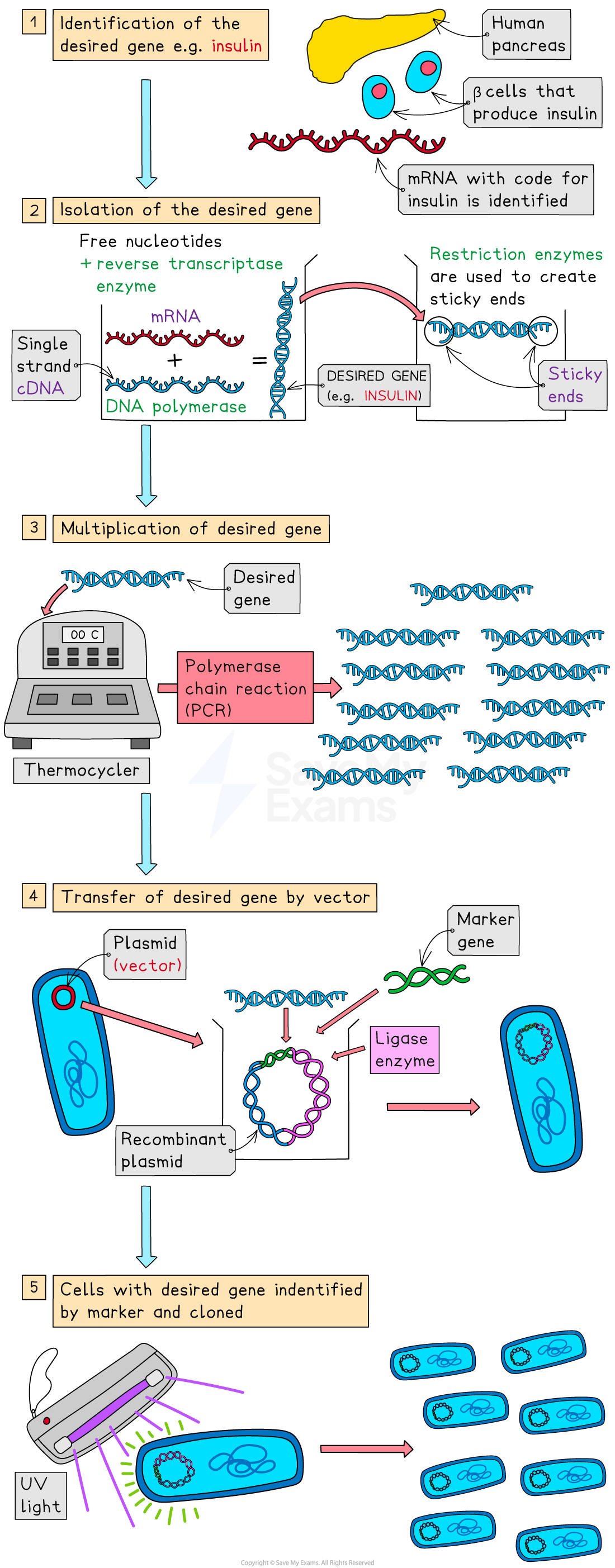Culture of Transformed Host Cells (AQA A Level Biology): Revision Note
Exam code: 7402
Culture of transformed host cells
The polymerase chain reaction (PCR) is a common molecular biology technique used in most applications of gene technology
It is described as the in vitro method of DNA amplification
Gene cloning can also be carried out in vivo, using bacteria
Bacteria are the most common host cells for this method as they increase in numbers rapidly and are relatively easy to culture
In vivo gene cloning
A DNA fragment is isolated
The desired gene(s) are obtained by one of three methods
Extraction using restriction endonucleases
The conversion of mRNA to cDNA using reverse transcriptase
Artificial synthesis in a "gene machine"
Promoter and terminator regions are added to the fragments of DNA to ensure replication
The DNA fragments are inserted into vectors
Restriction endonucleases and ligase enzymes are used to insert the fragments of DNA into the vector
Plasmids are commonly used vectors
The vectors are transported into bacterial host cells
The cells containing the modified plasmids are described as transformed host cells
Bacteria multiply in number
Under the optimum conditions, the bacteria rapidly increase in numbers
Marker genes are used to identify the successfully transformed bacteria
Only a small fraction of the bacteria will have taken up the plasmid containing the desired gene
Those that have taken up the plasmid can be identified via markers
Markers are genes that code for identifiable substances that can be tracked (e.g. GFP – green fluorescent protein, which fluoresces under UV light, or GUS – a β-glucuronidase enzyme, which transforms colourless or non-fluorescent substrates into products that are coloured or fluorescent)
Those that have not taken up the desired gene are destroyed
The remaining bacteria are cultured
Every time a bacterium divides, the desired gene is cloned

Recombinant proteins
Using the in vivo method above, recombinant DNA can be used to produce recombinant proteins (RP), such as insulin
Bacteria have been genetically engineered for the production of human protein insulin to treat diabetes

Examiner Tips and Tricks
You will not be required to recall specific marker genes in your exam, but you should be able to interpret information relating to the use of recombinant DNA technology.

Unlock more, it's free!
Did this page help you?